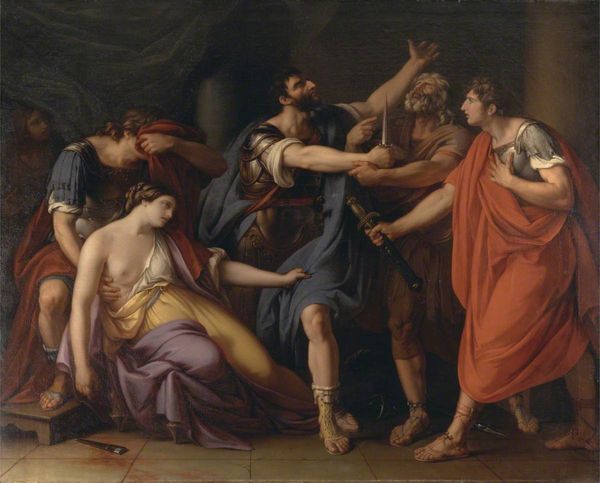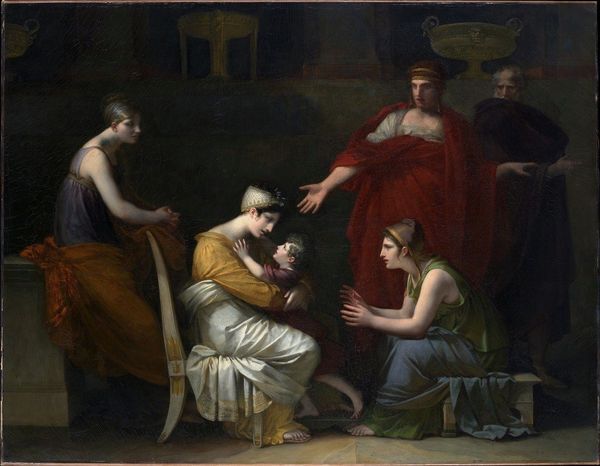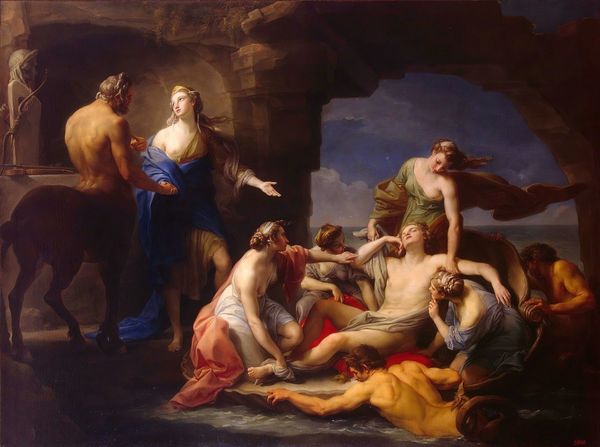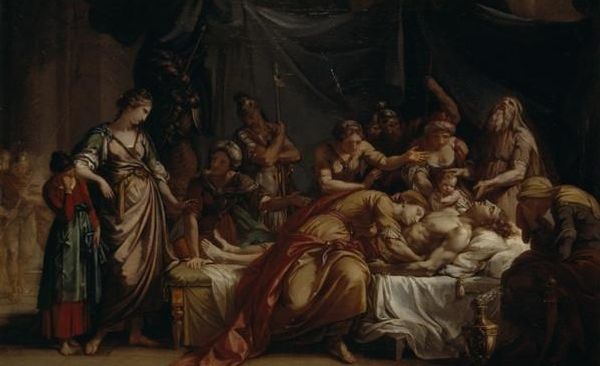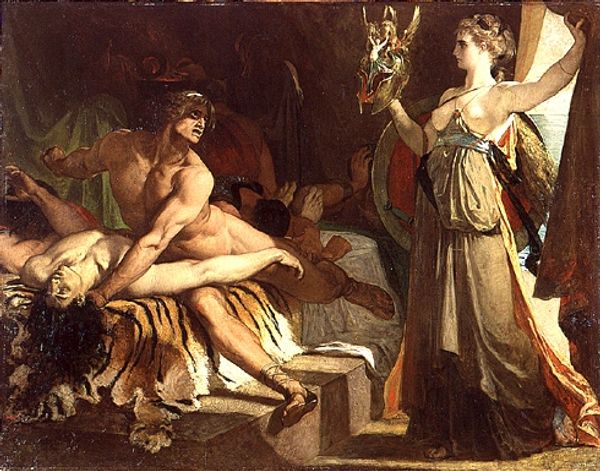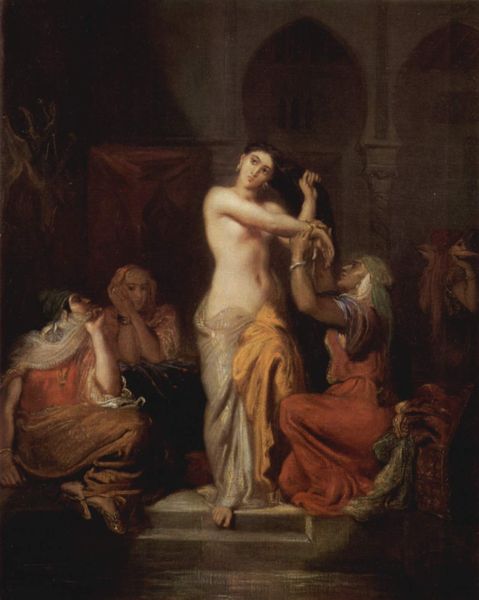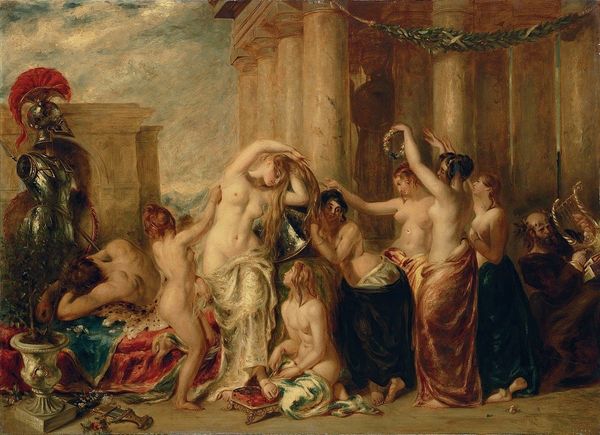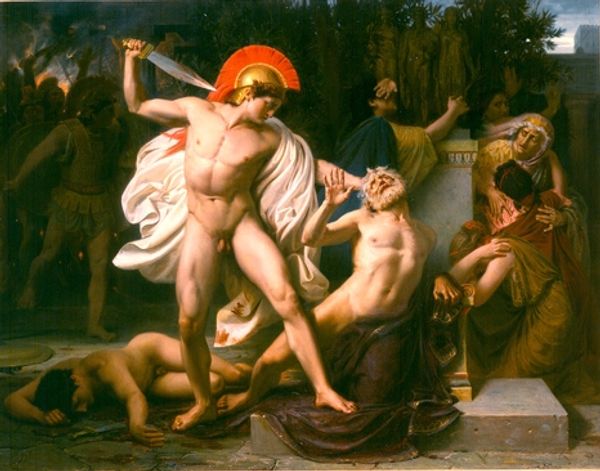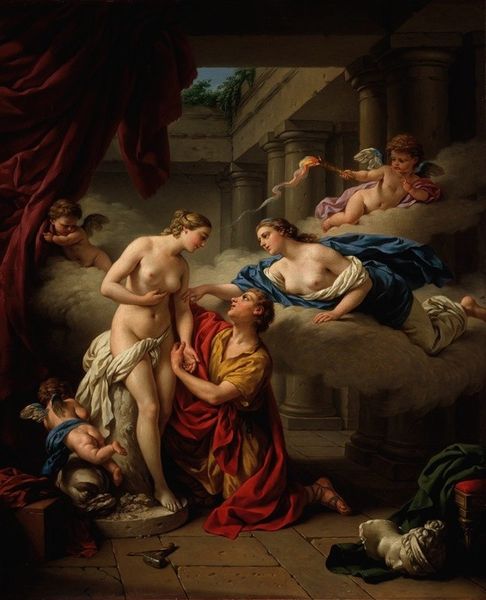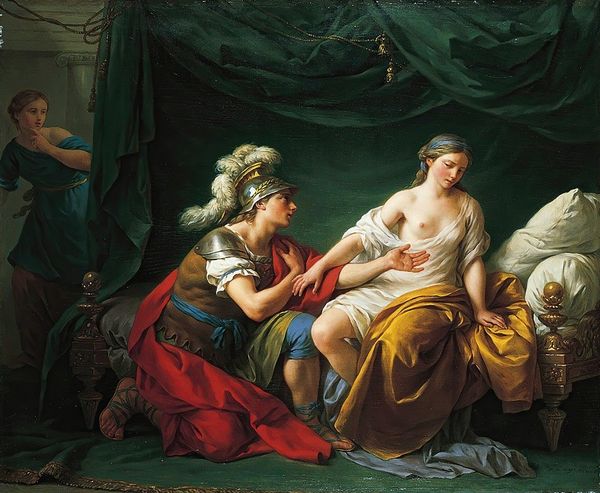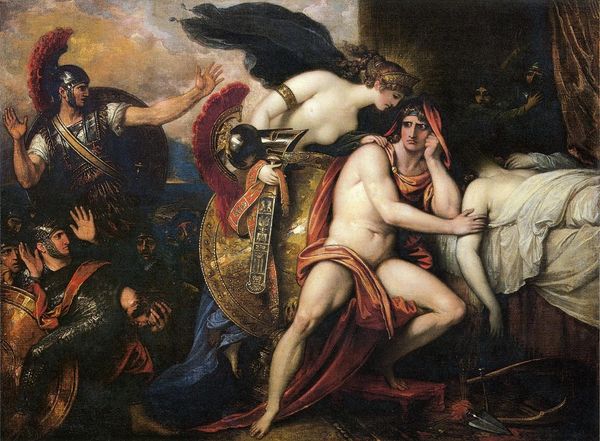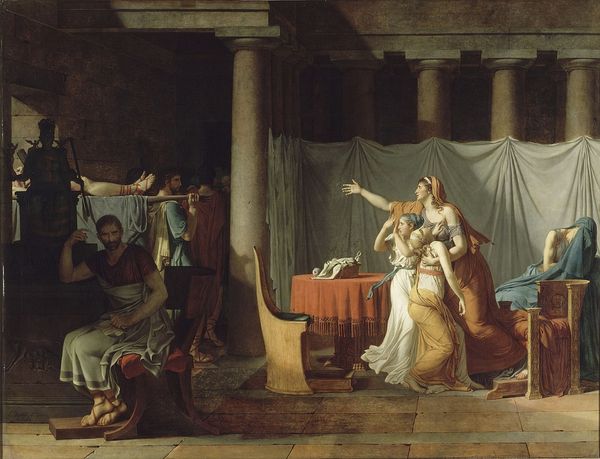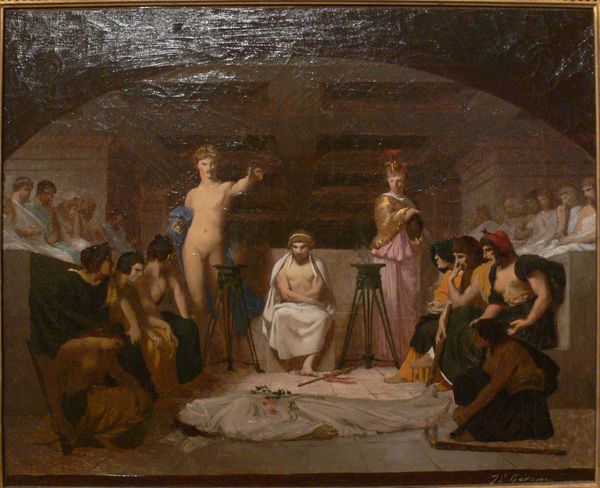
Achilles and the body of Patroclus 1855
0:00
0:00
nikolaige
Belarusian National Museum of Fine Arts, Minsk, Belarus
Copyright: Public domain
Curator: Let's explore Nikolai Ge's "Achilles and the body of Patroclus," a work dating from 1855 and currently residing in the Belarusian National Museum of Fine Arts. It's an oil painting showcasing a poignant scene from Greek mythology. Editor: My immediate impression is of intense emotion, of course. The painting exudes grief; the heavy use of shadows accentuates this mood. Curator: Indeed, and Ge positions this emotional tableau within a powerful exploration of relationships shaped by war. The painting prompts us to question patriarchal systems, and consider the often-silenced narratives of love and loyalty in hyper-masculine contexts. Think, for instance, of Achilles' profound mourning and rage driving him. Editor: The arrangement of figures struck me. The lifeless body of Patroclus horizontally juxtaposed with the anguished, leaning form of Achilles above it generates a dynamic contrast. I note how the artist plays with light and dark to isolate Achilles' face, almost inviting a focus on individual emotion versus collective despair. Curator: Ge certainly draws attention to Achilles, not merely as a warrior, but as a man deeply affected by loss, his power seemingly dissolving in the face of vulnerability. Further, we could unpack how classical portrayals often sidelined such tender representations of male intimacy in art, hinting at themes of queer desire often left unspoken in heroic narratives. Editor: What is interesting in how Ge is handling the light! Patroclus’ pale skin seems luminous, which could symbolize the loss of life and maybe immortality or at least an entry into the stories we tell about heroes and legends.. And that harsh lighting isolates figures to amplify the overall dramatic effect, it also creates an amazing set of triangles if you trace the outlines of figures and garments! Curator: And what does it suggest about power when the legendary Achilles is displayed, not in battle, but in mourning, defying our common, classical expectations of heroism? Ultimately, Ge provokes us to re-examine the multifaceted stories of men, especially concerning love and warfare within broader socio-political frameworks. Editor: Yes, the geometric relationships help intensify the moment by unifying or dividing, and reinforcing visual reading patterns but as we considered context the image tells the classical myth in ways the eye both absorbs the visual details and unpack the layered emotional and politicized ones.. Thank you for giving me more insights.
Comments
No comments
Be the first to comment and join the conversation on the ultimate creative platform.
